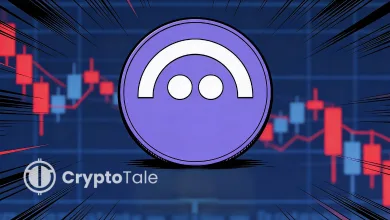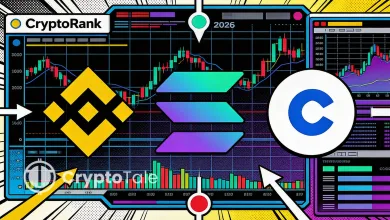Kalshi Partners With RedStone to Take Prediction Markets On-Chain

- Kalshi and RedStone unite to connect regulated data with decentralized finance networks.
- Developers gain direct access to Kalshi’s real-time prediction market information.
- The partnership bridges off-chain insights with on-chain smart contract functionality.
Kalshi, a regulated prediction marketplace, has joined forces with RedStone to integrate its event-driven markets on-chain across more than 110 blockchain networks, according to a company announcement. The partnership marks a major development in bridging traditional event markets with decentralized finance (DeFi) ecosystems.
RedStone, an oracle based on blockchain technology, is particularly known for providing real-time price feeds for DeFi assets. This will allow developers to obtain live event data from Kalshi across various chains. The company claims to have achieved a total value of more than $8.5 billion without experiencing any pricing errors or downtime.
Kalshi, regulated by the U.S. Commodity Futures Trading Commission (CFTC), records over $50 billion in annualized trading volume. Since its founding in 2019, the platform has standardized event contracts and established a trusted system that facilitates millions of trades globally. This integration marks a significant step toward making regulated market data accessible within decentralized applications for the first time.
Real-Time Event Data Across Global Networks
This integration allows developers to access Kalshi’s real-world event data on-chain to build DeFi tools, trading platforms, and analytics dashboards. The collaboration will start with three key events discussed: the New York City mayoral election, the 2028 Democratic presidential nominee, and the number of Federal Reserve rate cuts expected in 2025.
Marcin Kaźmierczak, co-founder of RedStone, remarked that the project transforms “market expectations into trustworthy inputs for smart contracts.” He emphasized that RedStone’s ambition is to render event data “as reliable and easy to build with as price feeds.”
Through the partnership, DeFi developers can utilize Kalshi’s prediction data via the pull and push oracle model, providing them with flexible and customizable access across various chains. With the use of these feeds, protocols can react automatically to regulated and real-time information, thus opening up new avenues for lending platforms, derivatives markets, and on-chain insurance applications.
This step not only makes Kalshi a major player in the price data but also positions it as a constantly updating “index of human conviction.” The platform gathers insights from various markets, including politics, culture, sports, and finance. It thus provides developers and institutions with access to dynamic event data streams.
Empowering Builders in the Decentralized Economy
John Wang, Head of Crypto at Kalshi, described the partnership as a “major milestone” toward bringing Kalshi fully on-chain. He said access to live Kalshi data through RedStone “represents a leap forward for decentralized finance.”
Until now, Kalshi’s market data was confined to its centralized exchange. Now, DeFi applications, social finance protocols, and data analytics tools can all use this regulated information directly. This shift opens new frontiers for innovation within decentralized ecosystems.
Related: Kalshi’s Surge to 60% Market Share: A New Era in Prediction Markets
RedStone confirmed that developers participating in the Kalshi Builders Program will benefit most from the integration. They can use either the pull or push data models to design adaptive, event-driven applications that automatically adjust to real-world outcomes.
As Kaźmierczak stated, “Prediction markets have become one of the fastest-growing sectors in crypto during 2025. We’re proud to support Kalshi’s expansion on-chain, building transparency and trust through reliable data.”
The collaboration is not only a reinforcement of the infrastructure of decentralized finance, but it also represents a new paradigm: a regulated and verifiable data stream that links global events directly to on-chain logic. Now that Kalshi data is accessible on over 110 chains, the question arises: what revolutionary applications will the next developers come up with?




